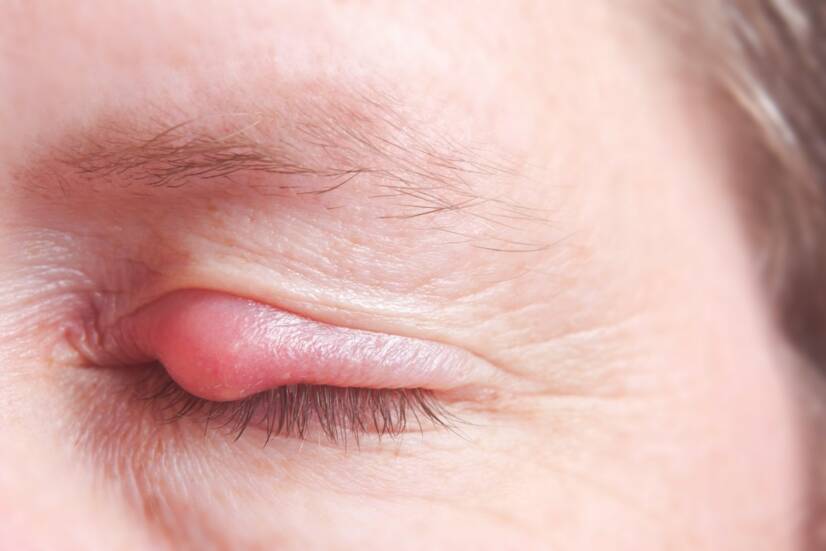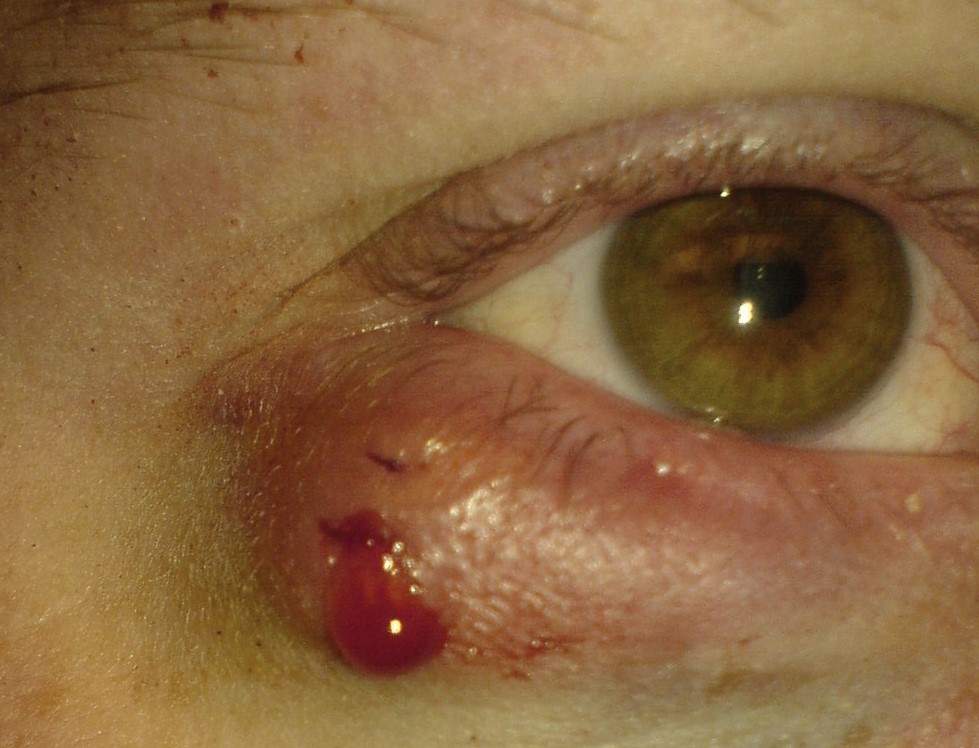- solen.sk - eye infection
- wikiskripta.eu - eyelid infection
Eyelid lump: why does a fatty, white and other lump, eyelid cyst form?

Bulges on the eyelids occur as a result of increased exertion, improper hygiene, when fat metabolism is disturbed, and as a result of infection. Inflammation of the blocked sebaceous gland is common. The most common diseases are barley and wolf'sbane. However, a bulge can also be of tumor origin.
A lump on the eyelid is usually a symptom of an inflamed eyelid gland. Whether it is Meibomian gland or other glands. Some inflammations are also purulent, others are not. It is not always a requirement that the lump must rupture and ooze pus.
Sometimes it is without this symptom.
However, it is always the case that pus should certainly not be forced out of the lump. Similarly, neither should any gland in the eye area that is inflamed. In such a case, there is a risk of complicating the inflammation of that eye.
Barley or wolf grain?
A lump can appear on both the lower and upper eyelid. Basically, two diseases are characterised by this symptom. Either it is a barley grain (also known professionally as hordoleum) or a wolf's grain (also called chalazion).
Both cases require a visit to a specialist doctor who can prescribe adequate treatment. Or, alternatively, a specific procedure to improve its course. However, there are cases where this lump disappears on its own after a while. And this is in the case of a retreat of inflammation in the gland.

Risk factors contribute to the blockage and inflammation of the sebaceous ducts:
- oily skin type
- hormonal changes
- weakened immunity
- Diabetes
- eye strain, e.g. even when neglecting to wear glasses
- hygiene, namely touching the eyes with dirty hands
- dry eye syndrome
- high intraocular pressure
Eye lump - a barley grain
Barley grain is the most common eyelid disease. A painful lump appears on the lower or upper eyelid. It is caused by a blockage of one of the surface glands of the eyelid.
This blockage causes inflammation, which then manifests itself in the characteristic redness, swelling and pain. The disease itself first manifests itself in pain in the whole eye area, later in redness. Eventually, a swelling, i.e. a lump, develops. The eyeball is filled with pus and is painful.
If there are no complications, it is possible for the disease to be cured without medical intervention. Over time, the grain of barley matures until the lump on the eyelid bursts, the pus drains out and the swelling is relieved.
However, those who do not want to suffer pain or wait for a longer period of time (even two weeks) until the whole process is over by itself can visit a doctor. The doctor will cut the grain under local anaesthesia, the pus will drain out and then the doctor will disinfect the area. Then an antibiotic ointment is applied topically.
It can also be wolfsbane.

The second common disease that also manifests itself as a painful lump on the eyelid is wolf's claw. This disease is also known professionally as chalazion. In chalazion, there is a purulent inflammation in the Meibomian gland.
Meibomian glands are located on the edge of the eyelid. They produce sebum that moistens the eyelid margin. There are several dozen of them on both edges. The higher number is on the upper.
In this case, too, the classic symptoms of redness, swollen nodules, and pain occur. The complication is a degeneration into an abscess or phlegmon. This complication occurs mainly in the chronic form of the disease. It is caused by blocking the outflow of this gland with accumulated secretion.
A lump formed in this way heals spontaneously in about 2 to 3 weeks. Here, too, it is possible to see a doctor who, by expert intervention, can release the lump by surgical incision in the event of unsuccessful antibiotic therapy.
The pus drains out, the pressure is relieved and there is a faster healing and an earlier recovery. Exceptionally, a tumour of the Meibomian gland can arise from this inflammation. This is a serious disease, but it is very rare. In this case, a biopsy and histology of the sample taken must be performed.
Other causes of eyeballs on the eyelid?
In addition to the above mentioned formations, other formations can occur on the eyelids. These include various warts, cysts, abscess, fatty swellings. Fatty formations are most often the cause of faulty fat metabolism. They also arise as a result of increased fat intake through diet.
A herpetic, viral infection can also take place on the eyelids. This viral infection is caused by the herpes simplex virus. In the initial phase, redness, swelling of the eyelid and typical herpetic swellings are present.
This infection is most often unilateral and self-healing. It occurs when the organism is weakened, as is the case with herpes simplex on the lip. Skin swelling and edema are also present in allergic eyelid inflammation.
Allergic eczema is most often caused by pollen irritation, but also as a reaction to cosmetic products. Symptoms such as swelling, i.e. swelling, itching, redness are present.
Various abscesses and phlegmons on the eyelids occur as a result of cosmetic hair removal of the eyebrows or eyelashes, when small wounds on the eyelids become infected. Infection in the eyelid area can also spread from the nasal cavities.
Cancers
Basalioma can also develop on and around the eyelids. Basalioma is a tumour of the eyelashes that is sensitive to touch and often bleeds. It is not painful. It is easily treatable in the early stages. Therefore, early diagnosis is important.
Basalioma is not dangerous and is the most common tumour. However, if its examination and treatment are neglected, it can seriously complicate the condition of the eye and the area around it. In the worst cases, it can cause damage that can lead to the loss of the eye.
Malignant melanoma is the most common form of cancer of the eye itself. It is the most common form of intraocular tumour. Various tumours can affect not only the eye, but also nearby areas such as the orbit, eyelashes or conjunctiva.
Suspicious are formations that do not heal, itch or bleed for a long time. It is therefore important to seek professional help when experiencing problems, namely an examination by a specialist, i.e. an ophthalmologist.
Video about eyelid problems
Diseases with symptom "Bulks on the cap"
Interesting resources
Related










